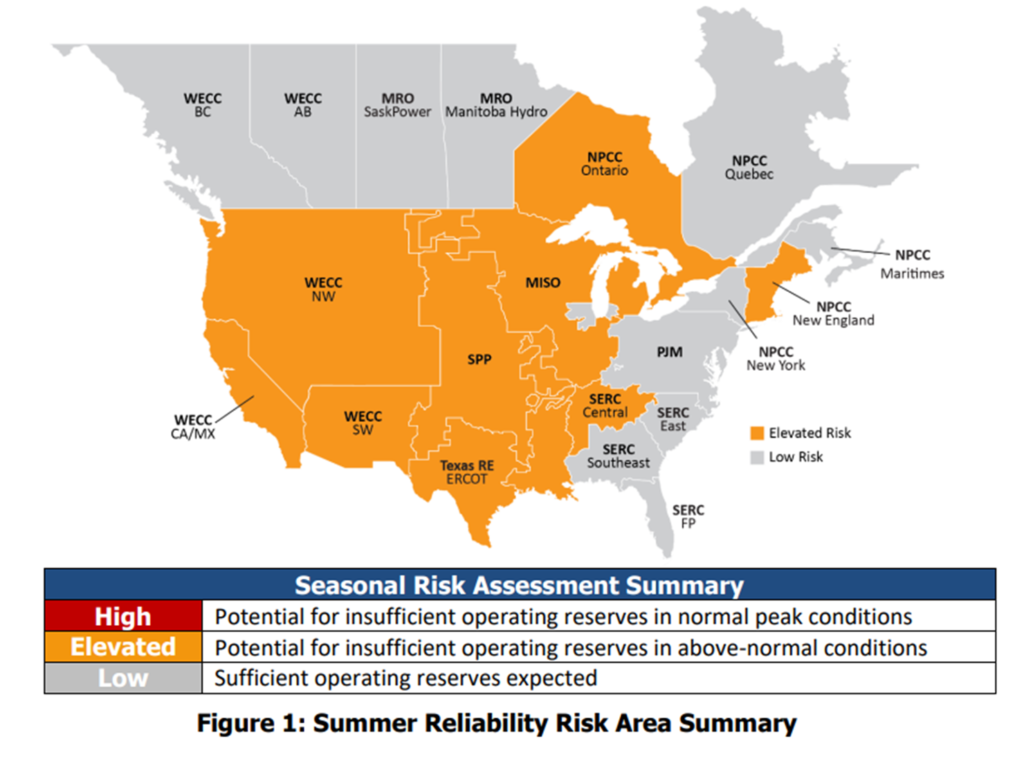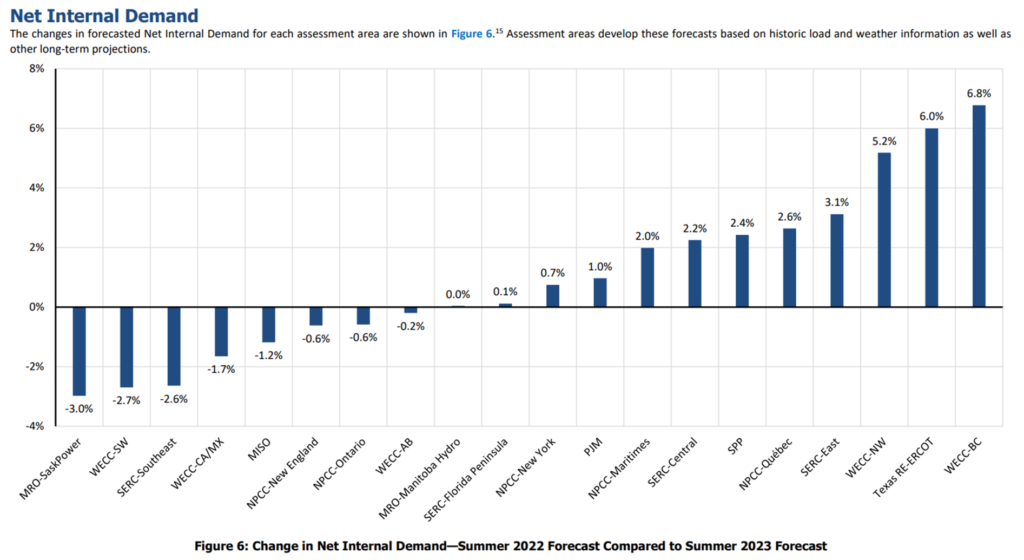Yesterday NERC released its 2023 Summer Reliability Assessment (more). The risk map for this summer has lots of orange but no red. This suggests some improvement from the recent Winter Assessment’s prominent bands of scarlet. (Please see map below.)
Fundamental to all of these assessments is careful consideration of generation capacity, transmission capacity, demand projections, and reserve margins. Appropriately — almost inevitably — this depends on probabilistic judgments. The Summer Reliability Assessment explains:
Regional Entities and assessment areas provided a resource adequacy risk assessment that was probability-based for the summer season… The risk assessments account for the hour(s) of greatest risk of resource shortfall. For most areas, the hour(s) of risk coincide with the time of forecasted peak demand; however, some areas incur the greatest risk at other times based on the varying demand and resource profiles.
Generation and transmission factors can experience operational variance, but will not exceed known physical constraints. So, push capacity may be less, but it will not be more than these upper limits. Demand for electricity typically tracks recurring patterns, but can demonstrate extreme volatility when experiencing extreme heat or cold. And… extreme weather often stresses and disrupts generation and transmission equipment. The upper reaches of pull can easily exceed the upper limits of push. This is almost always (or just always?) true in demand and supply networks. Below is a chart forecasting probable demand shifts for 2023 compared to 2022.
All this is very reasonable… as long as we recall that probabilities and actualities are often different.

